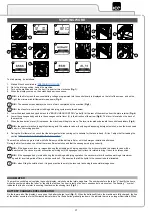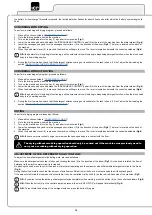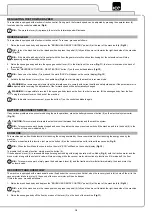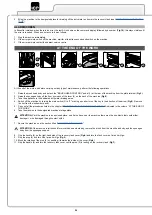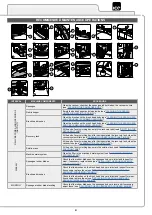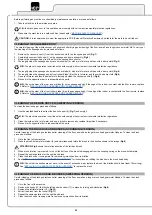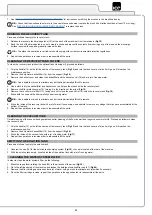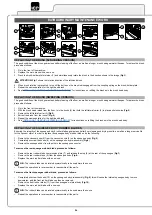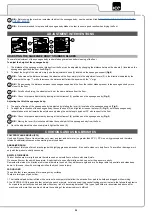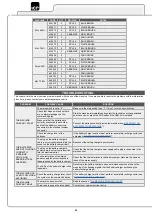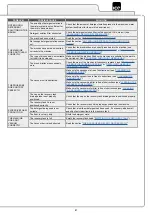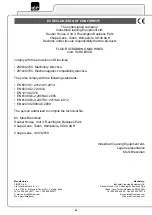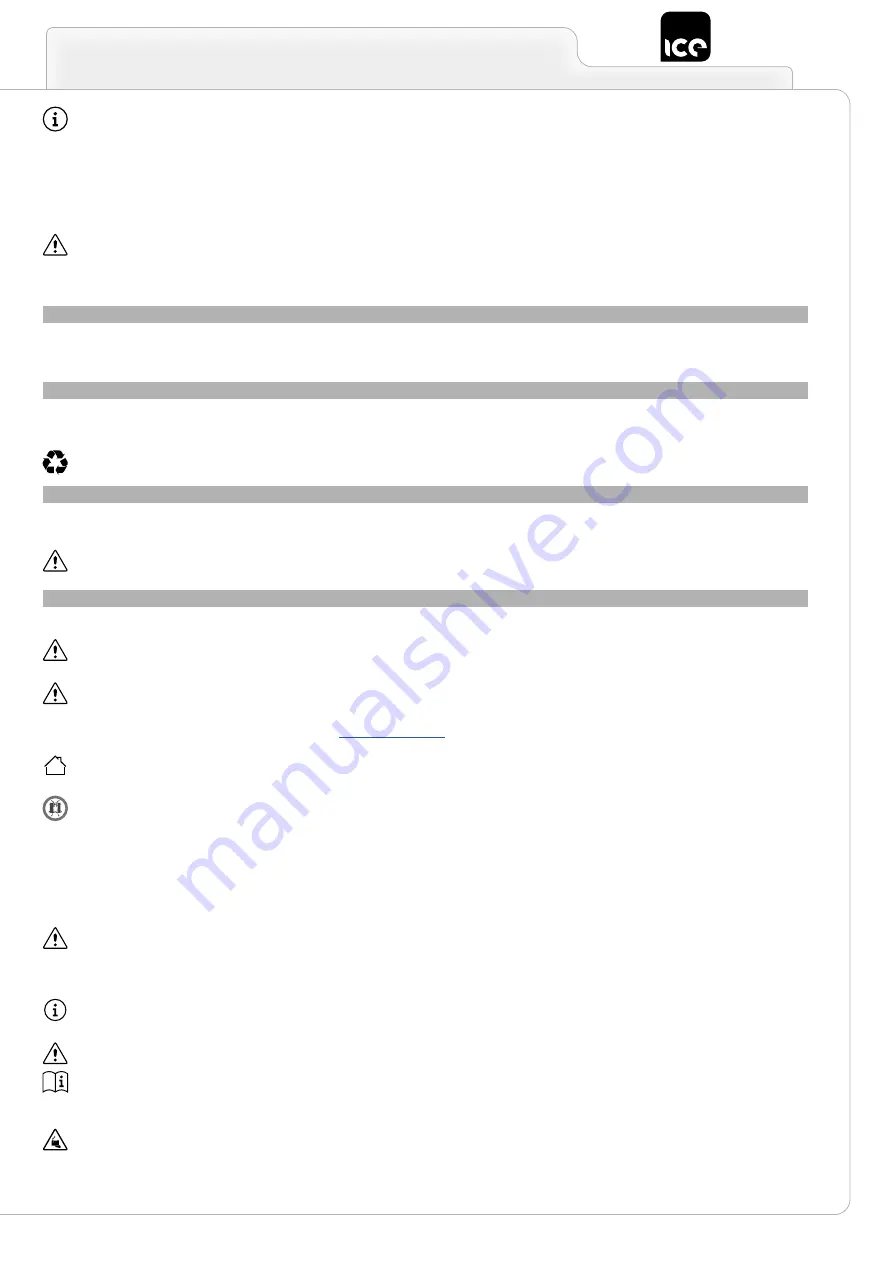
N.B.:
to lock the brush head in the raised position, depress the pedal (3) fully and then move it towards the right-hand side of the machine
(
Fig.3
).
5. Raise the squeegee body and turn the squeegee control lever (4) in the direction of the arrow (
Fig.4
). The lever is located on the back of the
machine.
6. Grip the handle (6) on the right-hand side of the recovery tank (
Fig.7
) and turn the tank as far as it will go, until it reaches the maintenance
position.
7. Disconnect the electrical system connector (7) from the battery connector (8) (
Fig.8
).
ATTENTION:
This process must be carried out by qualified personnel.
8. Grip the handle (6) on the right-hand side of the recovery tank and turn the tank until it reaches the work position.
TYPE OF BATTERY TO BE USED
Power to the machine must be supplied by two sealed traction batteries with gas recombination or gel technology. The batteries must meet the
requirements laid out in the norms: CEI EN 60254-1:2005-12 (CEI 21-5) + CEI EN 60254-2:2008-06 (CEI 21-7). For the best work results, we
suggest the use of two 12V MFP 112 Ah/C5 batteries.
BATTERY MAINTENANCE AND DISPOSAL
For battery maintenance and recharging, respect the instructions provided by the battery manufacturer. When the batteries reach the end of
their service life, they must be disconnected by specialized and properly trained personnel, and must be subsequently removed from the battery
compartment using suitable lifting devices.
N.B.: dead batteries are classified as dangerous waste and as such must be delivered to an authorised body for disposal.
INSERTING THE BATTERIES IN THE MACHINE
To fit the batteries inside the machine, contact an ICE assistance centre technician.
The batteries should be connected so as to obtain a total voltage of 24V.
WARNING:
ICE declines all responsibility for any damage to property or injury persons in the event that the batteries are replaced by an
unauthorized technician.
RECHARGING THE BATTERIES
The batteries must be charged prior to first use, and whenever they no longer provide sufficient power.
ATTENTION:
to avoid any permanent damage to the batteries, it is essential to avoid their complete discharge; begin recharging them
within a few minutes of noting the "discharged batteries" signal.
ATTENTION:
Never leave the batteries completely discharged, even if the device is not being used.
1. Bring the machine to the battery recharging area.
2. Make sure the machine is in a safe condition (read “
ATTENTION:
Park the machine in an enclosed place, on a flat and level surface; near the machine there must be no objects that could
either damage it, or be damaged through contact with it.
ATTENTION:
the room used to recharge the batteries must be adequately ventilated to prevent the accumulation of gases that leak from
batteries.
3. Grip the handle (6) and raise the recovery tank to the maintenance position (
Fig.7
).
To recharge the batteries without the built-in battery charger, proceed as follows:
• Disconnect the electrical system connector (7) from the battery connector (8) (
Fig.8
).
ATTENTION:
the following operations must be carried out by qualified personnel. An incorrect connection of the connector may cause a
malfunction of the device.
• Connect the external battery charger cable to the battery connector.
NOTE:
the coupling connector of the battery charger is consigned inside the bag containing this instruction booklet, and must be
assembled on the cables of the battery charger as indicated in the instructions.
ATTENTION:
before connecting the batteries to the battery charger, make sure it is suitable for the batteries used.
NOTE:
Carefully read the Use and Maintenance Manual of the battery charger to be used before carrying out the battery charge cycle.
•
Grasp the handle (6) and turn to the charging position; the lower part of the recovery tank must be resting on the stop (10) (
Fig.11
).
CAUTION:
keep the recovery tank open for the duration of the battery recharging cycle to allow gas fumes to escape.
13

















